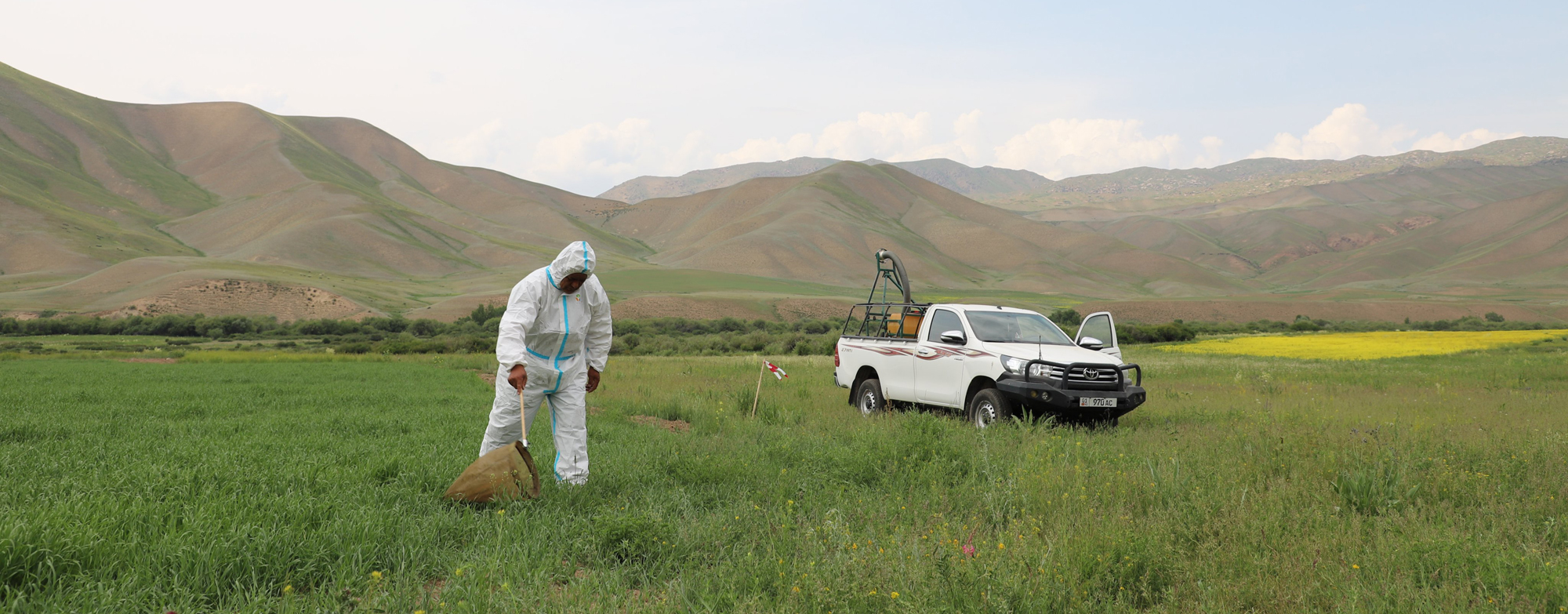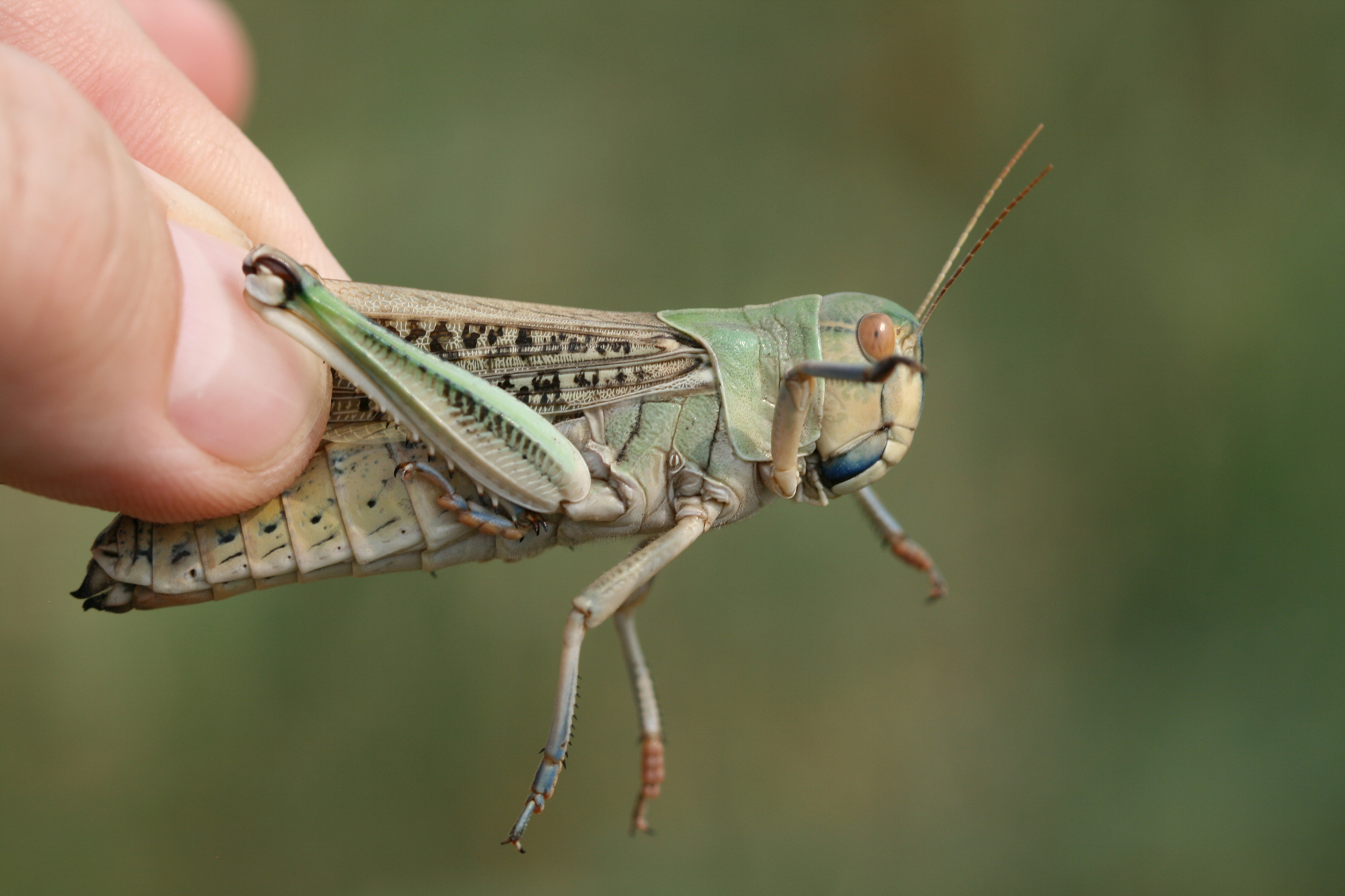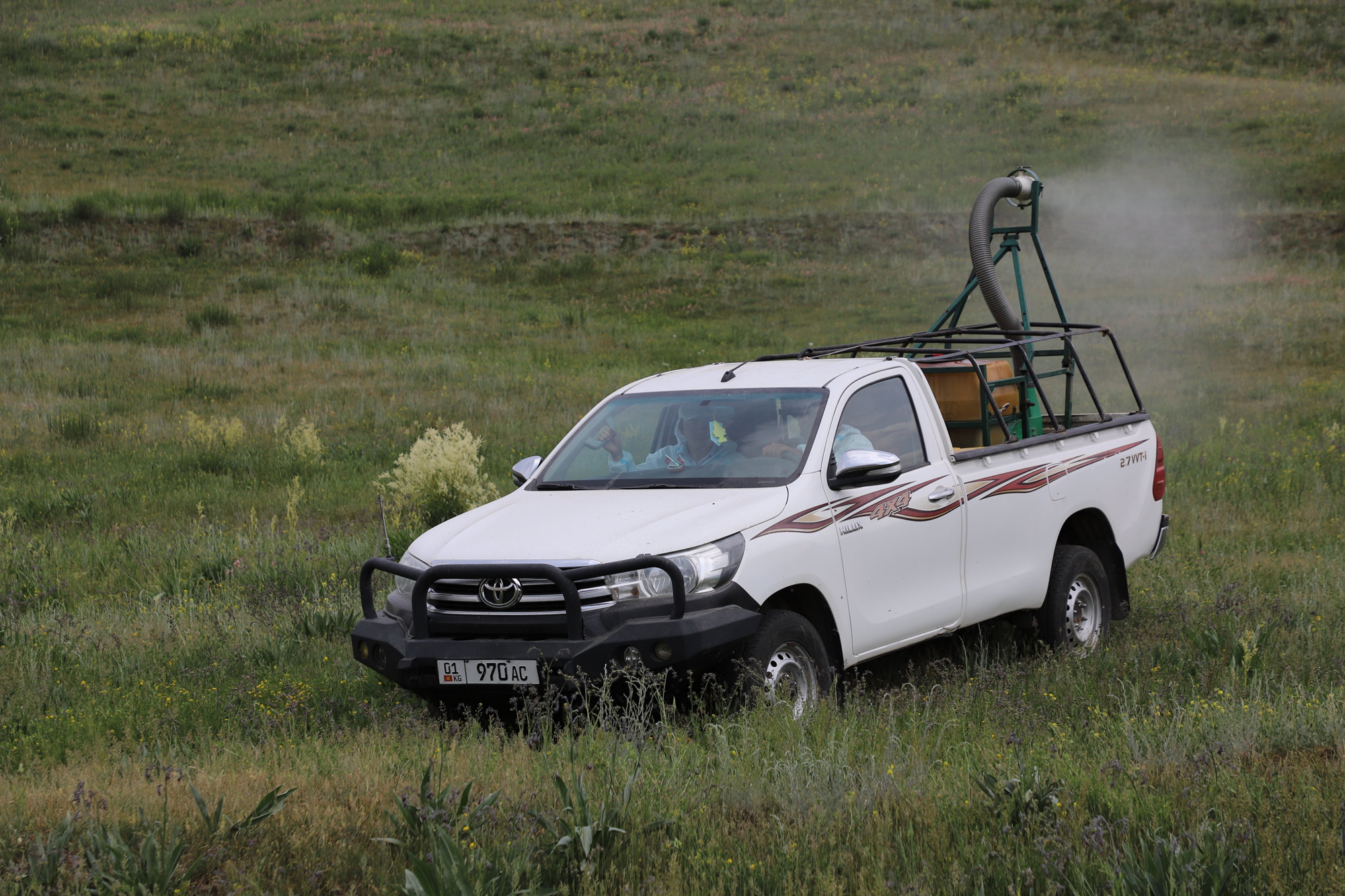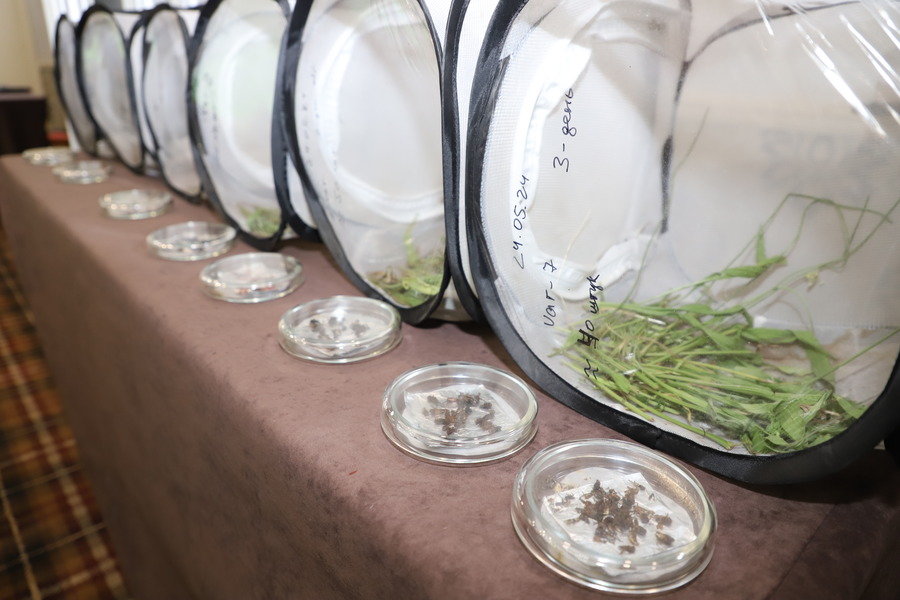
One Health on the frontlines: Sustainable locust management in Caucasus and Central Asia
In the vast steppes and fertile fields of the Caucasus and Central Asia, what looks like a shimmer on the horizon can be the beginning of disaster: locusts - winged, ravenous, and relentless.
Three major species in the region - the Italian, Moroccan and Asian migratory locusts - can destroy entire harvests in days, jeopardizing food security and livelihoods. With up to 25 million hectares under threat and 20 million people at risk, the stakes are high.
Locust outbreaks aren’t new in this part of the world - but the response is changing.
Prevention is the key. To achieve it, countries across the region are adopting integrated approaches, and one promising tool is the use of biopesticides - nature-based solutions that help protect not only crops and pastures, but also the health of people, animals, and ecosystems.
A regional threat demands a regional response
Locusts are transboundary plant pests present across all continents except Antarctica. In the Caucasus and Central Asia they inhabit vast areas spanning across borders. The migration of hopper bands or adult swarms turns what begins as a local outbreak into a regional challenge. For about 15 years, FAO has supported 10 countries in the region via its programme to improve national and regional locust management in Caucasus and Central Asia to manage the threat through regional cooperation and strengthened capacities, with the overall objective to promote early warning, early reaction and better control practices.
Since 2023, these regional efforts also focused on biopesticides - products that specifically target locusts without harming other organisms. Following two regional demonstrations in 2023, FAO led field trials and supported national efforts in six of the ten countries in 2024: Afghanistan, Georgia, Kazakhstan, Kyrgyzstan, Tajikistan and Uzbekistan.
These trials showed impressive results. No negative impacts on non-target organisms were recorded. Locust mortality in cages reached up to 100 percent, while field observations revealed that initially dense and large hoppers bands quickly lost their cohesion and mobility after the biopesticide treatment.
Within a few days, the hoppers became sluggish, stopped feeding and were less mobile. By two to three weeks after the treatment, their numbers had dropped below the economic threshold - the level at which locusts begin causing economic harm to crops and pastures. These trials - repeated in several countries in 2025 – represent an initial but highly promising step toward scaling up safer locust control across the region.


A win for environmental and human health
Biopesticides work differently than traditional chemical pesticides. In the field trials, Metarhizium acridum was used – a fungus that infects locusts from within and works gradually over several days. This slower action makes biopesticides unsuitable for rapid emergency crop protection, but ideal for preventive control strategies against hoppers in natural vegetation. Biopesticides are also better suited for use in sensitive ecosystems, such as near water sources, nature reserves or biodiversity hotspots, where minimizing environmental impact is critical.
In 2024, Uzbekistan treated over 1 600 hectares with biopesticides - including, for the first time in the country and across the region, in the ecologically sensitive Aral Sea area. Field results showed 89 to 98 percent effectiveness, with full mortality recorded in test cages. Similar trials in other countries also proved highly successful, and environmental monitoring confirmed no adverse effects on non-target organisms.
While biopesticides are safer, they are also more demanding. Their storage, transport, and mixing require careful handling, and their effective use depends on well-trained personnel.
“Using biopesticides requires knowledge. Technicians need training and support to apply them effectively as part of a holistic, preventive strategy” says Alexandre Latchininsky, an FAO Senior Locust Management Expert.
At the same time, countries don’t need to start from scratch. The same ultra-low volume spraying equipment used for chemical pesticides can be used for biopesticides, helping ease the transition to safer methods.
Protecting plants, people, and livestock
Locust outbreaks directly threaten crops. However, the chemicals used for their control can pose certain risks. Even when applied correctly, chemical pesticides can contaminate vegetation and crops, soil, water sources and may affect beneficial insects, particularly pollinators. They can expose rural populations and control teams to health risks if not applied and handled properly. With biopesticides, countries can tackle these threats at the source. That’s why FAO promotes integrated pest management to reduce reliance on conventional pesticides.
“This ecologically friendly product only kills locusts. These days in Central Asia and in the Caucasus, chemical insecticides are the main products used to control locusts. They also kill other insects, and in these treated areas it is not possible for animals to graze for several days. Now we saw that with ecologically non-harmful biopesticides, animals like sheep and goats, can graze in the pasture,” said Furkat Gapparov, a locust expert in Uzbekistan.
In the region, FAO is supporting countries to shift from reaction to prevention. This includes strengthening regional cooperation, deploying modern systems for locust data collection, analysis and forecasting, organizing training and national demonstrations, and promoting safer, less hazardous control methods.
To reduce the risks of pesticides, apart from promoting biopesticides, the FAO locust programme developed practical guidelines on pesticide risk reduction for locust control in Caucasus and Central Asia, along with other educational materials.
Crucially, FAO also supported the establishment of human health and environmental monitoring teams in six countries - a first for the region. These teams play a vital role in ensuring that best practices are followed during control operations: checking protective equipment use, informing rural communities in treated areas, monitoring potential health and environmental impacts, and adopting corrective measures when needed.

Safer control is rooted in prevention
Biopesticides aren’t a new tool - they’re part of a larger transformation. Locust management is becoming smarter, safer, and more coordinated.
Still, much remains to be done. The field trials mark only the beginning, and key challenges must be addressed before biopesticides can be used operationally at scale.
Sustainable locust management is more than just pest control, it’s about prevention - ensuring food security while safeguarding the health of people, animals and the environment.
That’s One Health in action - and it’s taking root across the Caucasus and Central Asia.
